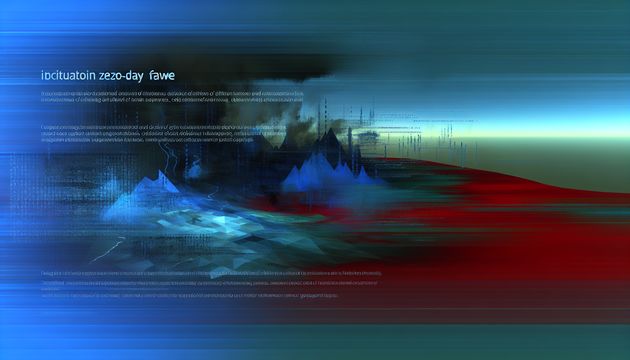
Understanding the Interlock Ransomware Attack on Kettering Health
The recent cyberattack on Kettering Health by the Interlock ransomware group has sent shockwaves through the healthcare industry. On May 20, 2025, Kettering Health’s network was breached using sophisticated phishing and impersonation techniques, exploiting vulnerabilities that allowed the attackers to deploy a remote access trojan (RAT) known as NodeSnake. This breach highlights the growing threat of ransomware attacks on healthcare systems, which are increasingly reliant on digital infrastructure (BleepingComputer).
The attackers managed to exfiltrate a staggering 941 GB of sensitive data, including patient records and financial documents, causing widespread disruption across Kettering Health’s facilities. This incident underscores the critical need for robust cybersecurity measures in the healthcare sector, as the consequences of such breaches can be severe, affecting patient safety and privacy (Comparitech).
The Cyberattack: A Deep Dive into the Interlock Ransomware Incident
Initial Breach and Attack Vector
The Interlock ransomware attack on Kettering Health, which occurred on May 20, 2025, represents a significant breach in cybersecurity within the healthcare sector. According to reports, the attack was initiated by exploiting vulnerabilities in Kettering Health’s network systems. The Interlock group, known for its sophisticated tactics, employed a combination of phishing and impersonation techniques to gain unauthorized access to the network. Specifically, the group used ClickFix attacks, which involve impersonating legitimate IT tools to deceive network administrators and users. Think of ClickFix attacks as digital wolves in sheep’s clothing, tricking the gatekeepers into opening the doors (BleepingComputer).
Once inside the network, Interlock deployed a previously unknown remote access trojan (RAT) named NodeSnake, which facilitated deeper infiltration into the system. Imagine NodeSnake as a digital spy, quietly moving through the network, gathering information, and setting up camp to ensure it can stay hidden even if someone starts looking for it (Security Boulevard).
Data Exfiltration and Impact
The scale of data exfiltration during the attack was extensive. Interlock claimed to have stolen 941 GB of data, including 732,489 documents across 20,418 folders. This data encompassed sensitive information such as patients’ medical records, pharmacy and blood bank documents, financial reports, payroll information, and scans of identity documents, including passports (Comparitech).
The impact on Kettering Health was profound, leading to a system-wide outage that affected 14 medical centers and 120 outpatient facilities. The attack disrupted the electronic health record (EHR) system, forcing medical staff to revert to pen and paper for charting and documentation. Elective procedures were canceled, although emergency rooms and clinics remained operational (The Register).
Response and Mitigation Efforts
In response to the attack, Kettering Health undertook a series of measures to mitigate the damage and restore system functionality. The organization collaborated with external cybersecurity experts to conduct a thorough review of all affected systems. This review led to the eradication of the tools and persistence mechanisms used by the attackers. Enhanced security protocols, including network segmentation, updated access controls, and improved monitoring systems, were implemented to prevent future breaches (BleepingComputer).
By June 4, 2025, Kettering Health had successfully restored access to its core EHR components, marking a significant step in the recovery process. Efforts to bring the MyChart medical record application system and call centers back online were ongoing, with temporary phone lines established to maintain communication with patients (Comparitech).
Interlock’s Modus Operandi and Previous Attacks
Interlock is a relatively new ransomware operation that emerged in September 2024. Despite its recent appearance, the group has quickly established a reputation for targeting healthcare organizations worldwide. The attack on Kettering Health is part of a broader pattern of assaults attributed to Interlock, which includes a notable breach of DaVita, a Fortune 500 kidney care provider. In that incident, Interlock claimed to have exfiltrated 1.5 terabytes of data, further highlighting the group’s capacity for large-scale data theft (BleepingComputer).
Interlock’s operations are characterized by their use of sophisticated techniques, such as ClickFix attacks and the deployment of RATs like NodeSnake. These methods enable the group to bypass traditional security measures and maintain prolonged access to compromised networks. The group’s willingness to publicly claim responsibility for attacks and leak stolen data on their data leak site underscores their confidence and brazenness (Security Boulevard).
Implications for Healthcare Cybersecurity
The Kettering Health incident serves as a stark reminder of the vulnerabilities inherent in the healthcare sector’s reliance on digital systems. The attack not only disrupted medical services but also posed significant risks to patient safety and privacy. As healthcare organizations increasingly digitize their operations, the need for robust cybersecurity measures becomes paramount.
The Interlock attack highlights the importance of proactive threat detection and response strategies. Healthcare providers must invest in advanced security technologies, such as artificial intelligence and machine learning, to detect and mitigate threats in real-time. Additionally, regular security audits, employee training programs, and incident response planning are essential components of a comprehensive cybersecurity strategy (Comparitech).
In conclusion, the Interlock ransomware attack on Kettering Health underscores the critical need for heightened cybersecurity awareness and preparedness within the healthcare industry. As cyber threats continue to evolve, healthcare organizations must remain vigilant and adaptable to safeguard their systems and protect patient data.
Final Thoughts
The Kettering Health ransomware attack serves as a stark reminder of the vulnerabilities that exist within the healthcare sector’s digital infrastructure. As healthcare organizations continue to digitize their operations, the importance of implementing comprehensive cybersecurity strategies cannot be overstated. This includes investing in advanced technologies like AI for threat detection, conducting regular security audits, and ensuring that staff are well-trained in recognizing and responding to potential threats (Security Boulevard).
The Interlock group’s attack on Kettering Health is part of a broader trend of increasing ransomware incidents targeting healthcare providers. This highlights the urgent need for the industry to adapt and strengthen its defenses against such sophisticated threats. By learning from incidents like these, healthcare organizations can better protect their systems and the sensitive data they hold, ultimately safeguarding patient trust and safety (The Register).
References
- BleepingComputer. (2025). Kettering Health confirms Interlock ransomware behind cyberattack. https://www.bleepingcomputer.com/news/security/kettering-health-confirms-interlock-ransomware-behind-cyberattack/
- Security Boulevard. (2025). Interlock and the Kettering ransomware attack: ClickFix’s persistence. https://www.securityboulevard.com/2025/06/interlock-and-the-kettering-ransomware-attack-clickfixs-persistence/
- Comparitech. (2025). Interlock adds Kettering Health to its ransomware data leak site: 941 GB allegedly stolen. https://www.comparitech.com/news/interlock-adds-kettering-health-to-its-ransomware-data-leak-site-941-gb-allegedly-stolen/
- The Register. (2025). Ransomware scum leak Kettering patient data. https://www.theregister.com/2025/06/04/ransomware_scum_leak_kettering_patient_data/



